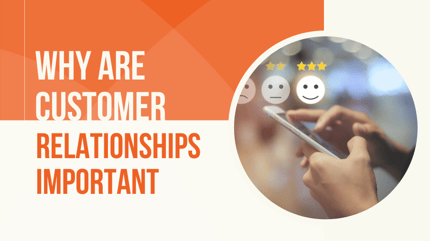
Most companies are looking to increase their revenue over time, and the no-brainer solution is to make more sales and find more customers. But companies often overlook a valuable source of new sales: their existing customer base.
Customer Acquisition: The Funnel vs The Flywheel
The traditional way of thinking about customers and customer acquisition is the funnel. A bunch of leads go in the top, and those leads are narrowed down through the funnel until a handful of customers come out the bottom. But what happens to those customers once they’ve made their initial purchase?
The funnel model doesn’t visualize what happens once a lead becomes a customer, but there is still activity happening among your customers following a purchase that’s critical for your company to stay on top of. Understanding and leveraging post-purchase activity can drive more sales, so the funnel leaves out a vital set of follow-up and retention strategies.
Another way of thinking about customer acquisition is through a flywheel. The flywheel puts customers at the center and leverages the energy of happy customers to keep bringing in new sales. Instead of focusing on constantly bringing in new leads to conjure up new sales, the flywheel focuses on customers who generate new business through upselling or cross-selling and referral business. When using the flywheel, customer relationships are a necessity to achieve business growth.
Why Do Customer Relationships Matter?
Without customers, you have no business. And while generating new customers helps businesses grow, investing resources in your current customer base can help your business grow too. With the flywheel model, customers are the center, and companies utilize customer relationships to keep the flywheel spinning.
Customers have the ability to fuel new business growth, but if they’re unsatisfied, they can also be your company’s downfall. Unhappy customers can leave and deter others from working with you, and the easiest way to make customers unhappy is to go radio silent after their purchase.
Customer or technical support is great for dealing with issues, but it should also be on the company to make sure customers are happy whether or not they have any issues. Today’s self-serve customers may not go to support if they’re having a problem and will instead seek to solve it themselves. Even customers who don’t have any issues should get follow up communication from your company.
Growth Strategies With Customer Relations
There are two ways to grow your business when focused on customer relationships:
- Retention
- Referral
Both of these strategies rely on maintaining happy customers. Customers who see the value of your products or services are more likely to keep using them and to tell their networks.
Retention Strategies
A study by Brightback found that 62% of the marketers they surveyed saw customer retention as a higher priority than customer acquisition. Retaining customers is cheaper than acquiring new customers, and, as we’ll discuss in the next section, retaining customers leads to referrals.
Upsell & Cross-Sell
Happy customers will probably wonder how else your company can help them. Upselling and cross-selling are important strategies for retention and also bring in revenue. When you have more solutions for your customers’ pain points, you can improve their experience and draw in additional revenue without going through the process of acquiring fully new customers. Effective cross-selling and upselling increases your current customers’ lifetime value.
Communication & Engagement
Not sure what your customers want from you next? Ask! Either through email, surveys, or social media, engage with customers online to keep communication lines open and gather what they may be interested in next, or how you might improve what you offer currently.
Referral Strategies
You probably have a product or service that you just cannot stop talking about to your friends, family, and colleagues. Ideally, you have customers who feel that way about your company. When you have excited, happy customers, they’re your brand ambassadors who can drum up more business for you through referrals.
Refer-a-Friend Campaign
A targeted and more measurable approach, you can launch a refer-a-friend campaign that gives your brand ambassadors a special perk when they send over a friend or colleague. That might be an extended free trial of an add-on, a discount, or early access to new features.
Online Reviews
Encourage happy customers to leave reviews both on your website and third-party sites where your products and services are listed. Gift cards and coupon codes help entice customers to take the extra couple minutes to leave a review. Reviews can help new leads understand how you can help them without your saying so, which builds trust.
Getting Started with the Flywheel
Adjusting your strategy from a funnel to a flywheel can be tricky, and it involves the work of both marketing and sales departments. If your company sells indirectly, then adjusting to a flywheel requires buy-in from your sales partners. Whether you sell directly or indirectly, ManoByte can help your company grow by reviewing your sales process and developing a new flywheel strategy with you.
Ready to Dive In?
Work with our team of Business Process experts and watch us take manual clunky systems, tech stacks, and processes and turn them into tailored, intelligent workflows that deliver business outcomes.

